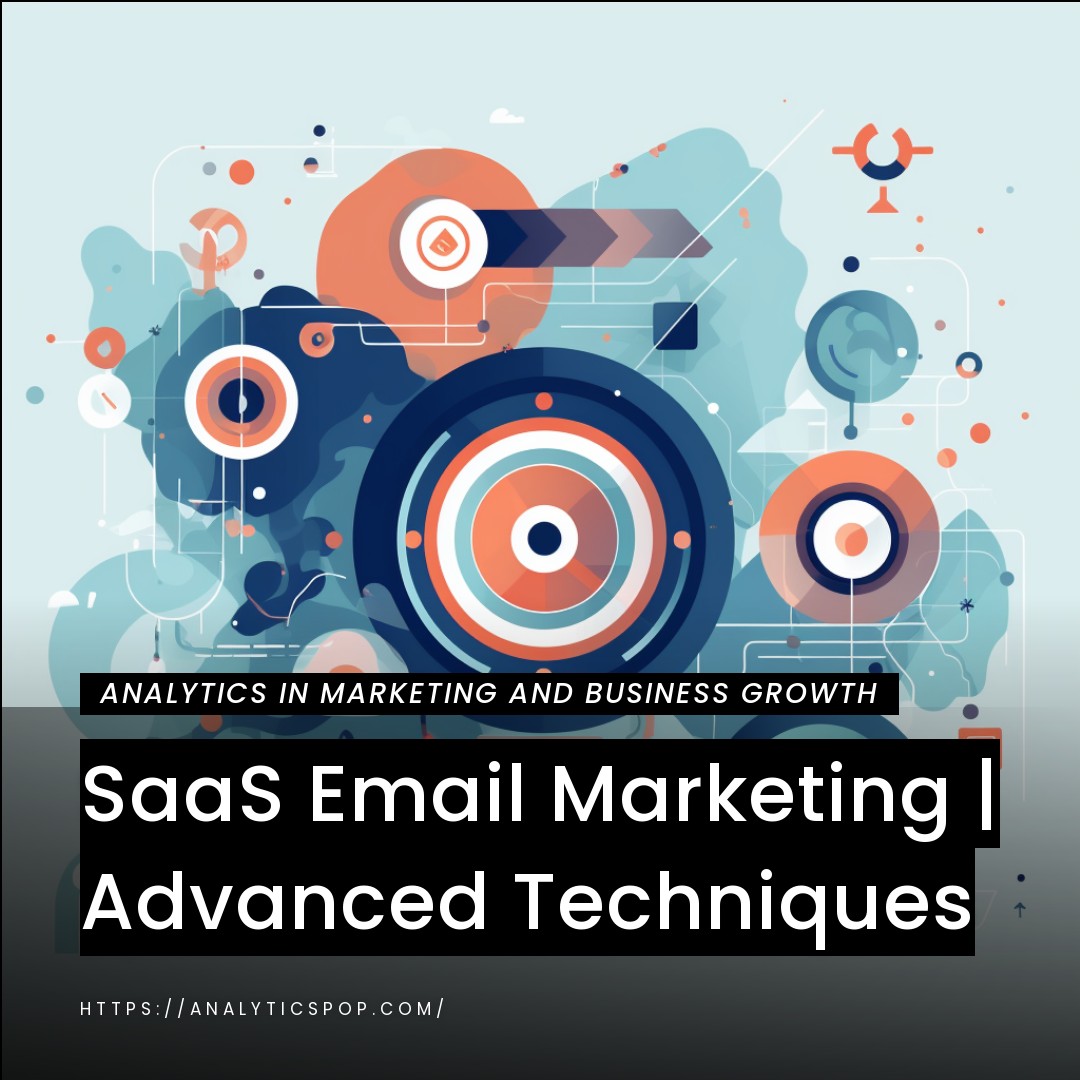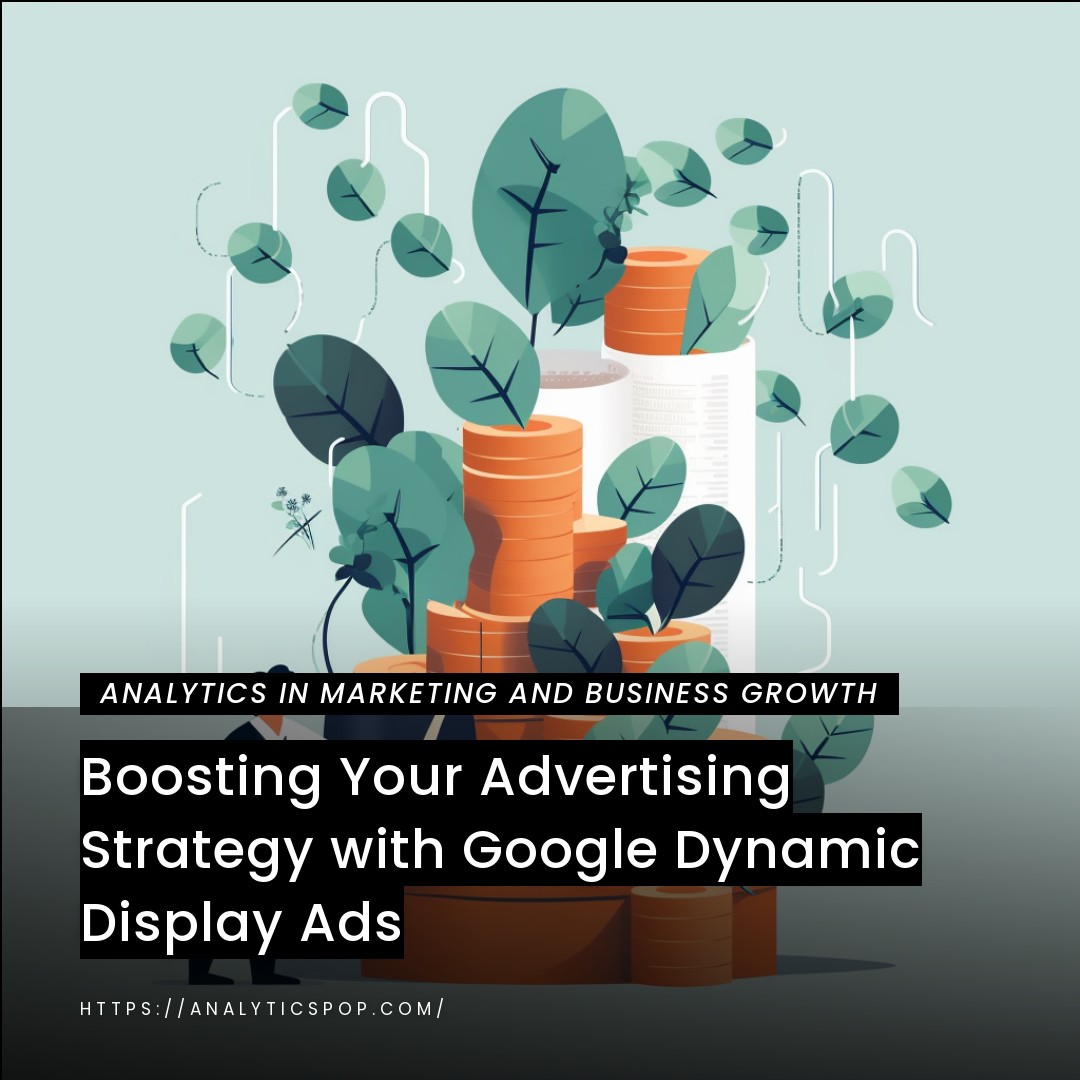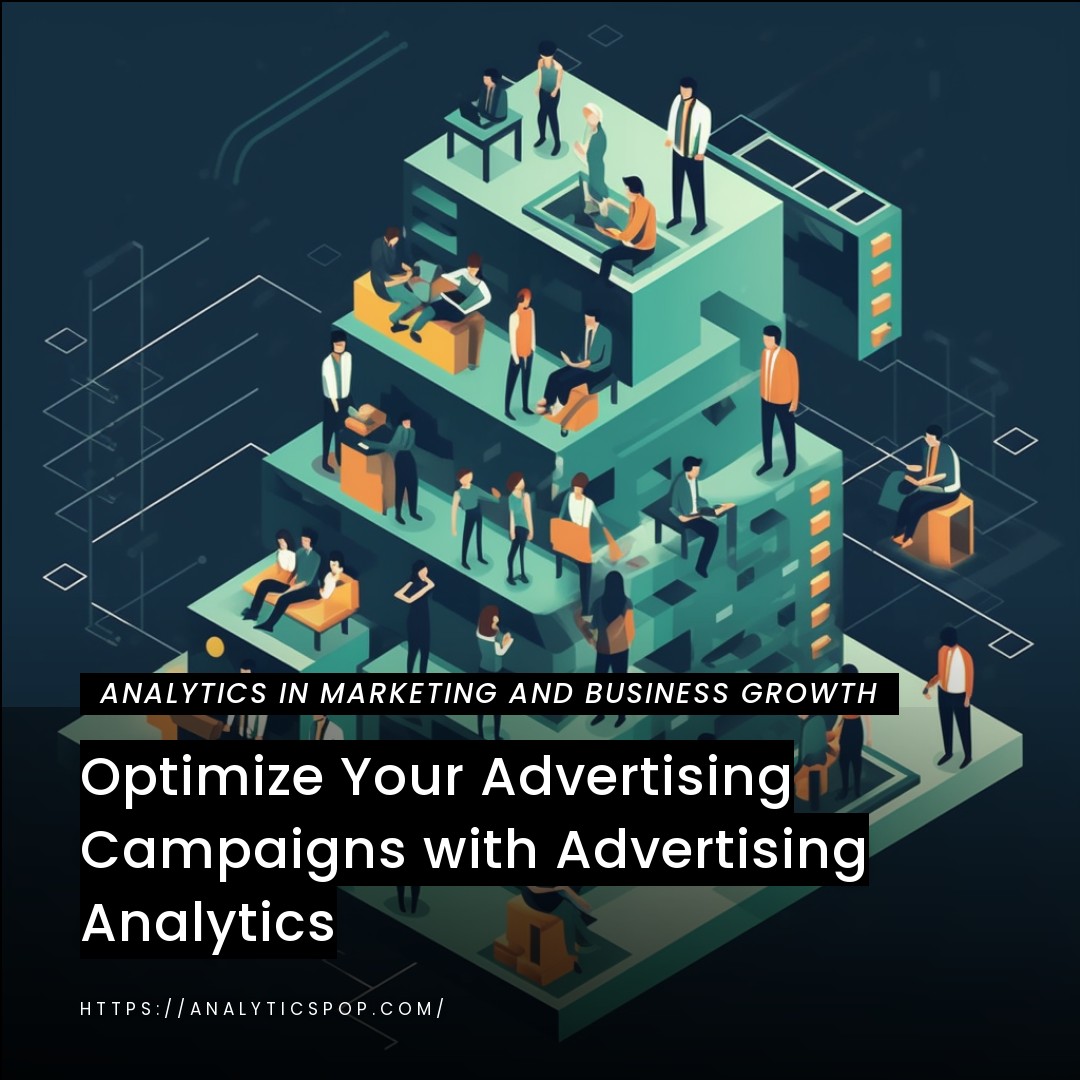Mastering SaaS Email Marketing: Advanced Techniques for Effective Campaigns
Mastering SaaS email marketing requires a combination of advanced techniques to ensure effective campaigns. You can maximize engagement, conversions, and customer retention with the right strategies.
You can boost open and click-through rates by tailoring your email content to individual recipients. Research shows personalized emails generate up to 6 times higher transaction rates than non-personalized ones. You can use dynamic tags to insert the recipient’s name or incorporate their previous interactions with your SaaS product.
Segmentation is another powerful technique. You can send targeted messages that resonate with specific segments by categorizing your email list based on user behavior, preferences, or demographics. For instance, you could segment your list based on the user’s stage in the customer journey, such as trial users, paying customers, or churned users, and deliver customized content accordingly. Studies show that segmented email campaigns can drive a 760% increase in revenue.
Automation plays a vital role in optimizing SaaS email campaigns. You can deliver timely and relevant emails at scale by setting up automated workflows triggered by specific user actions or events. For instance, you can automate onboarding sequences to guide new users through your product features or send re-engagement emails to inactive users to encourage them to return.
Finally, monitoring and analyzing your email marketing metrics is crucial. You can identify what works and make data-driven improvements by tracking metrics like open rates, click-through rates, conversions, and churn rates. A/B testing different subject lines, CTAs, or email designs can help optimize your campaigns further.
Mastering SaaS email marketing involves leveraging personalization, segmentation, automation, and data analysis to drive engagement and conversions. By implementing these advanced techniques, you can enhance your email campaigns and maximize the effectiveness of your SaaS marketing efforts.
What is SaaS Email Marketing
Welcome to the world of SaaS email marketing, where effective communication is pivotal in driving customer engagement and business growth. Software as a Service (SaaS) companies rely heavily on email marketing to nurture leads, onboard new users, and retain existing customers. This introduction will explore the key components and benefits of SaaS email marketing.
First and foremost, SaaS email marketing revolves around delivering targeted and relevant messages to the right audience at the right time. Using email as a communication channel, SaaS companies can build relationships with their subscribers, educate them about their products or services, and ultimately drive conversions.
One of the core elements of SaaS email marketing is building a quality email list. This involves capturing leads through website opt-ins, signup forms, or free trial registrations. By obtaining permission to contact these individuals, you can establish a direct line of communication and nurture them through personalized email campaigns.
Segmentation is a crucial strategy in SaaS email marketing. By categorizing your subscribers based on various factors like their interests, behavior, or demographics, you can tailor your emails to their specific needs. This targeted approach increases the relevance and effectiveness of your campaigns, leading to higher engagement and conversion rates.
Automation is another crucial aspect of SaaS email marketing. With the help of email marketing automation tools, you can set up automated workflows that trigger emails based on specific user actions or events. This allows you to deliver timely and personalized messages, such as onboarding sequences for new users, upgrade offers for trial users, or re-engagement emails for inactive customers.
One of the significant advantages of SaaS email marketing is its measurability. Through email analytics, you can track metrics like open rates, click-through rates, and conversions, gaining valuable insights into the effectiveness of your campaigns. This data-driven approach empowers you to optimize your strategies, test different elements, and continuously improve your email marketing performance.
SaaS email marketing is a powerful tool for SaaS companies to engage, educate, and convert their audience. You can create targeted and impactful email campaigns that drive customer acquisition, retention, and revenue growth by focusing on list building, segmentation, automation, and analytics. Get ready to harness the potential of SaaS email marketing and take your business to new heights.

Understanding SaaS Email Marketing
SaaS (Software as a Service) email marketing uses cloud-based software applications that enable businesses to plan, create, automate, and analyze email marketing campaigns. SaaS email marketing platforms provide a range of features and tools to help enterprises effectively engage with their target audience through email.
Here are some critical aspects of understanding SaaS email marketing:
- Cloud-Based Platform: SaaS email marketing platforms operate on the cloud, so you don’t need to install any software on your computer. Users can access the platform through a web browser, efficiently managing campaigns from anywhere with an internet connection.
- Email Campaign Creation: SaaS email marketing platforms offer intuitive drag-and-drop editors or customizable templates that allow businesses to design professional-looking email campaigns without coding or design skills. You can create personalized emails by inserting dynamic content, such as the recipient’s name or relevant product recommendations.
- Contact Management: These platforms provide tools to manage your email contacts. You can import existing contact lists, segment your subscribers based on various criteria (e.g., demographics, past purchases), and maintain clean and updated contact databases.
- Automation and Personalization: SaaS email marketing platforms allow businesses to set up automated email workflows or drip campaigns. Specific actions or events, such as a new subscriber, abandoned cart, or birthday trigger these sequences of emails. Automation helps deliver timely and personalized emails to subscribers, improving engagement and conversions.
- A/B Testing: SaaS email marketing tools often include A/B testing capabilities. A/B testing helps optimize email campaigns by identifying the most effective elements. You can test different variations of subject lines, email content, or calls to action to determine which version performs better.
- Analytics and Reporting: These platforms provide in-depth analytics to measure the performance of your email campaigns. You can track metrics like open rates, click-through rates, conversion rates, and unsubscribe rates. This data helps you understand the effectiveness of your campaigns and make data-driven decisions to improve future campaigns.
- Integration with Other Tools: SaaS email marketing platforms often integrate with other software, such as customer relationship management (CRM) systems, e-commerce platforms, or marketing automation tools. Integrations streamline the data flow between different systems, enabling seamless collaboration and providing a holistic view of your marketing efforts.
- Deliverability and Compliance: SaaS email marketing platforms typically have measures to ensure high email deliverability rates. They often comply with email regulations and best practices, such as providing unsubscribe links and enabling double opt-in processes, to maintain compliance with anti-spam laws.
By leveraging a SaaS email marketing platform, businesses can efficiently manage and optimize their email campaigns, effectively engage with their subscribers, and drive desired outcomes such as increased sales, customer loyalty, or brand awareness.
Benefits of Advanced SaaS Email Marketing Techniques
Advanced SaaS email marketing techniques offer several benefits that can significantly enhance your email campaigns. Here are some key advantages:
- Personalization and Segmentation: Advanced SaaS email marketing allows you to personalize your emails and segment your audience based on various criteria. You can deliver highly relevant content by tailoring your messages to individual subscribers or specific segments, resulting in higher engagement and conversion rates.
- Automated Workflows: SaaS email marketing platforms enable the creation of computerized workflows or drip campaigns. You can set up a series of emails triggered by specific actions, such as sign-ups, purchases, or website interactions. Automation saves time and ensures consistent communication, nurturing leads and guiding them through the customer journey.
- Behavioral Tracking and Triggered Emails: Advanced SaaS email marketing techniques allow you to track subscriber behavior, such as opens, clicks, or purchases. This data allows you to send triggered emails based on specific actions or events. For example, if a subscriber abandons their cart, you can automatically send a reminder email with the abandoned items, increasing the chances of conversion.
- Dynamic Content: SaaS email marketing platforms often support dynamic content, which allows you to personalize email content based on subscriber attributes or preferences. You can dynamically insert relevant product recommendations, personalized offers, or location-specific information, making your emails more engaging and increasing the likelihood of conversion.
- A/B Testing and Optimization: Advanced SaaS email marketing techniques provide robust A/B testing capabilities. You can test different elements of your emails, such as subject lines, call-to-action buttons, or email designs, to determine which variations yield better results. By optimizing your campaigns based on data-driven insights, you can continually improve your email performance and achieve higher conversion rates.
- Advanced Analytics and Reporting: SaaS email marketing platforms offer comprehensive analytics and reporting features. Advanced analytics provide insights into subscriber behavior, campaign performance, and ROI, helping you make informed decisions and refine your email strategies. You can track key metrics like open rates, click-through rates, conversion rates, and revenue generated from email campaigns.
- Integration with Other Marketing Tools: Many advanced SaaS email marketing platforms integrate seamlessly with other marketing tools, such as CRM systems, marketing automation platforms, or analytics tools. The integration enables data synchronization, streamlined workflows, and a unified view of your marketing efforts. It allows you to leverage the power of multiple tools and create a more cohesive and effective marketing ecosystem.
- Enhanced Deliverability and Compliance: Advanced SaaS email marketing platforms prioritize email deliverability by implementing best practices, maintaining allowlisted IP addresses, and monitoring sender reputation. They often include compliance features, such as unsubscribe links, opt-in management, and compliance with anti-spam regulations, ensuring your email campaigns are delivered to the intended recipients and in line with legal requirements.
By leveraging advanced SaaS email marketing techniques, businesses can achieve higher engagement rates, increased conversions, and improved ROI from their email campaigns. These techniques empower you to deliver personalized, timely, and targeted messages to your subscribers, resulting in stronger customer relationships and better overall marketing performance.
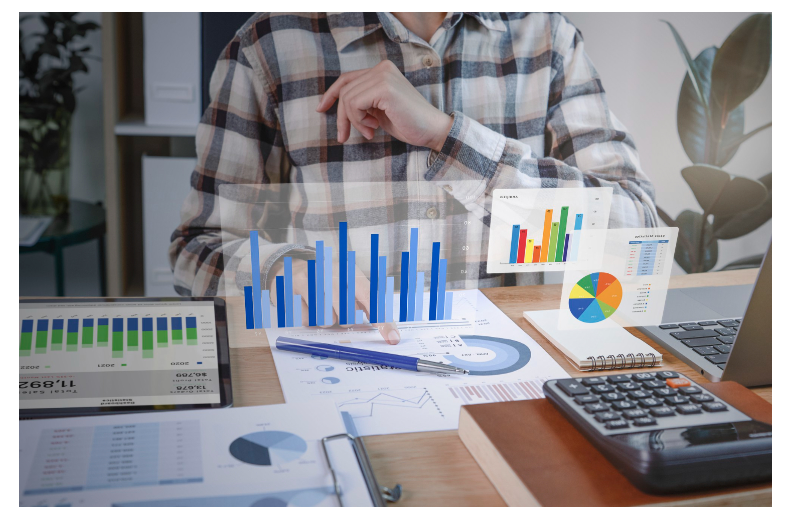
Advanced Techniques for SaaS Email Marketing
Regarding SaaS (Software as a Service) email marketing, you can implement several advanced techniques to enhance your strategy and maximize your results. Here are some of the key methods to consider:
- Personalization: Personalizing your email campaigns is essential for driving engagement and conversions. Use dynamic content and merge tags to tailor your emails based on each recipient’s demographics, behavior, or preferences. Consider incorporating their name, past interactions with your software, or personalized recommendations.
- Behavioral Triggers: Set up automated email sequences triggered by specific user behaviors or actions. For example, suppose a user signs up for a free trial but doesn’t upgrade within a specified period. In that case, you can send a personalized email offering additional information or incentives to encourage conversion.
- Drip Campaigns: Drip campaigns involve sending a series of pre-planned, automated emails over a specified period. These campaigns help nurture leads, onboard new users, and guide them through various customer journey stages. Plan your drip campaigns strategically, focusing on delivering relevant content at each location.
- Segmentation: Divide your subscriber list into segments based on criteria such as user behavior, demographics, or subscription plan. By segmenting your audience, you can tailor your messages more effectively, sending targeted content and offers that resonate with each group.
- A/B Testing: Test different elements of your emails, such as subject lines, email copy, CTAs, or visuals, to identify what resonates best with your audience. Small changes can significantly impact open rates, click-through rates, and conversions. Conduct A/B tests and analyze the results to optimize your campaigns continuously.
- Customer Success Stories and Case Studies: Share success stories and case studies of your existing customers to demonstrate the value of your SaaS solution. Highlight how your software has helped businesses achieve their goals and solve specific challenges. These stories can be shared via dedicated email campaigns or integrated into your regular newsletter.
- Cart Abandonment Emails: If your SaaS includes an e-commerce component, send automated emails to users who have added items to their cart but still need to complete the purchase. Remind them about the pending acquisition, offer incentives, or address any concerns they may have to encourage them to convert.
- User Onboarding and Training: For new users, provide a series of emails that guide them through the onboarding process and offer tips for getting started. Consider giving video tutorials, FAQs, or other resources to help users understand your software’s features and benefits.
- Reactivation Campaigns: Target dormant or inactive users with reactivation campaigns. Send personalized emails with offers, product updates, or exclusive content to reignite their interest and encourage them to engage with your software again.
- Integration with Behavioral Analytics: Integrate your email marketing platform with behavioral analytics tools to gain insights into user interactions, preferences, and engagement patterns. This data can help refine your email marketing strategy, create more personalized campaigns, and improve overall customer experience.
Remember, while implementing these advanced techniques, it’s essential to maintain good email deliverability practices, comply with relevant regulations (such as GDPR or CAN-SPAM Act), and regularly monitor your email metrics to measure the effectiveness of your campaigns and make data-driven improvements.
Personalization and Dynamic Content
Personalization and dynamic content are potent techniques in SaaS email marketing that can significantly improve engagement and conversions. Here’s a closer look at how you can leverage these strategies effectively:
- Personalized Subject Lines: Use the recipient’s name or other relevant personal information in the subject line to grab their attention and increase open rates. A study by Experian found that personalized subject lines had 26% higher open rates than generic ones.
- Personalized Salutations: Address each recipient by name in the email greeting to create a sense of familiarity and connection. This simple touch can make your emails feel more personal and less like mass communications.
- Customized Email Content: Tailor the body of your emails based on individual user data, such as their past interactions, preferences, or purchase history. This could include recommending specific features, upgrades, or content that aligns with their needs and interests.
- Dynamic Content Blocks: Utilize emotional content blocks within your emails to display different sections or offers based on user attributes. For example, you can show various product recommendations to users based on their subscription plan, industry, or previous engagement.
- Behavior-Triggered Personalization: Set up automated emails triggered by specific user behaviors, such as a completed purchase, abandoned cart, or product usage milestones. Use these triggers to send personalized follow-ups, product recommendations, or relevant tips based on the user’s actions.
- Location-Based Personalization: If your SaaS solution has a geographic aspect, such as regional pricing or location-specific features, personalize your emails to reflect the recipient’s location. This can enhance relevance and show that you understand their unique needs.
- Time-Based Personalization: Experiment with sending emails at specific times that align with each recipient’s time zone or historical engagement patterns. This ensures that your emails arrive conveniently, increasing their chances of being opened and read.
- User-Generated Content: Incorporate user-generated content, such as testimonials, reviews, or success stories, into your emails. Highlighting real experiences and positive customer feedback adds a personal touch and builds credibility.
- Dynamic Recommendations: Use machine learning algorithms to generate a dynamic product or content recommendations based on each recipient’s behavior, preferences, or similar user profiles. These recommendations can be included in emails to drive engagement and cross-selling opportunities.
- Progressive Profiling: If you collect user data through forms or surveys, progressively gather additional information over time. Ask for new details with each interaction to build a more comprehensive user profile. This data can then be used to personalize future emails and offers.
Remember, effective personalization requires a robust understanding of your audience and the collection of relevant data. Ensure that you have a reliable data management system to capture, organize, and leverage user information appropriately and in compliance with privacy regulations.
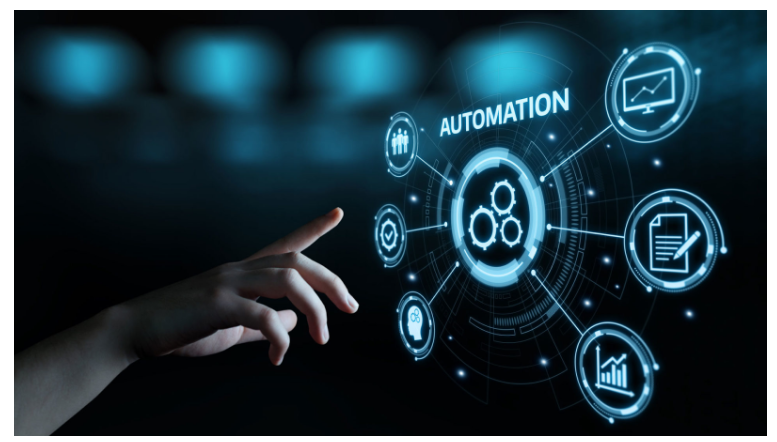
Behavioral Triggers and Automation
Behavioral triggers and automation are essential to an effective SaaS email marketing strategy. By setting up automated email sequences triggered by user behaviors, you can deliver relevant messages at the right time, nurture leads, onboard new users, and drive conversions. Here’s how you can leverage behavioral triggers and automation:
- User Onboarding: Design a series of automated emails to guide new users through onboarding. Send welcome emails, provide tips for getting started, highlight key features, and offer assistance to ensure a smooth onboarding experience. Trigger the sequence when a user signs up for a free trial or creates an account.
- Abandoned Cart Recovery: If your SaaS has an e-commerce component, set up automated emails to target users who have added items to their cart but still need to complete the purchase. Remind them about the items in their cart, offer incentives like discounts or free trials, and address any concerns they may have to encourage them to complete the transaction.
- Upselling and Cross-selling: Based on user behavior and purchase history, trigger automated emails to promote relevantly upsells or cross-sells. For example, if a user upgrades their subscription plan, you can send a follow-up email highlighting additional features or add-ons that complement their new plan.
- Renewal and Subscription Reminders: Set up automated email sequences to remind users of upcoming renewals or expirations. Provide timely notifications, offer incentives to renew, and emphasize the value they’ll continue to receive by staying subscribed to your SaaS.
- Inactivity and Re-engagement Campaigns: Identify users who have not engaged with your software or open emails for a specified period. Send personalized emails with exclusive offers, updates, or new features to entice them to re-engage with your SaaS. Trigger re-engagement campaigns to regain their interest.
- Customer Feedback and Surveys: Automate email campaigns to gather customer feedback and insights. Trigger surveys or feedback requests after specific user interactions or milestones. Use the feedback to improve your product, address customer concerns, and build stronger relationships.
- Event and Webinar Invitations: If you host events, webinars, or workshops, set up automated emails to invite users who have expressed interest or attended similar events in the past. Send event reminders, share relevant information, and provide registration details to encourage attendance.
- In-app Behavior Triggers: Integrate your SaaS with analytics tools to track user behavior within your software. Based on specific actions or milestones, trigger emails to provide relevant tips, tutorials, or next-step recommendations. For example, if a user completes a specific task, you can send an email with advanced techniques or best practices.
- Post-Purchase Follow-ups: Automate follow-up emails to ensure customer satisfaction after a user purchases or completes a significant action. Provide support resources, ask for feedback, and offer assistance in getting the most out of your SaaS.
- Customer Milestones and Anniversaries: Celebrate user milestones, such as their first year as a customer, and trigger automated emails to thank them for their loyalty. Offer exclusive discounts, rewards, or personalized messages to show appreciation and strengthen the customer relationship.
Use the data you collect to deliver targeted and personalized messages that resonate with each user. When setting up behavioral triggers and automation, consider your emails’ timing, relevancy, and segmentation. Regularly monitor the performance of your automated campaigns and make adjustments based on user engagement and conversion metrics.
Segmentation and Targeting Strategies
Segmentation and targeting strategies play a crucial role in SaaS email marketing by allowing you to tailor your messages to specific groups of users. By dividing your audience into segments based on relevant criteria, you can deliver more personalized and relevant content, increasing engagement and conversions. Here are some segmentation and targeting strategies to consider:
- Demographic Segmentation: Segment your audience based on demographic factors such as age, gender, location, job title, or company size. This can help you create targeted messages that resonate with specific groups of users.
- Behavior-Based Segmentation: Analyze user behavior within your SaaS platform to identify segments based on actions taken, engagement levels, feature usage, or purchase history. For example, you can segment users who have completed a specific action versus those who haven’t or segment based on the frequency of usage.
- Lifecycle Stage Segmentation: Divide your audience into different segments based on where they are in the customer lifecycle. This can include prospects, new users, active users, dormant users, and loyal customers. Tailor your messages to address the specific needs and goals of each stage.
- Subscription Plan Segmentation: If your SaaS offers different subscription plans, segment your users based on their subscribed plan. This allows you to provide targeted content and offers that align with the features and benefits of each project.
- Personalization Variables Segmentation: Segment your audience based on personalization variables, such as user preferences, interests, or past interactions. This can help you deliver content and recommendations specifically tailored to their needs.
- Customer Satisfaction Segmentation: Segment your users based on their satisfaction levels or feedback ratings. Use targeted emails to address concerns, encourage testimonials, or offer loyalty rewards. Identify promoters, passives, and detractors, and customize your messages accordingly.
- Email Engagement Segmentation: Segment your audience based on their email engagement levels, such as open rates, click-through rates, or inactive subscribers. Tailor your messaging to re-engage inactive subscribers, reward highly engaged users, or send targeted re-engagement campaigns.
- Customer Journey Segmentation: Map out your customer journey and segment users based on their specific stage—for example, users who have just signed up for a trial versus those in the evaluation phase. Customize your emails to guide them through their unique journey.
- Personalized Content Segmentation: Create segments based on specific content interests or preferences. For example, if you offer different software modules, segment users based on their module usage and send targeted content related to their interests.
- Integration with CRM Data: Integrate your email marketing platform with your Customer Relationship Management (CRM) system to leverage customer data for segmentation. This allows you to utilize data from sales interactions, support tickets, or customer surveys to create more granular segments.
Remember, effective segmentation and targeting require a solid understanding of your audience and the availability of relevant data. Regularly review and update your segments based on changing user behavior and preferences. Test different messages and offers for each piece to optimize your email marketing campaigns and drive better results
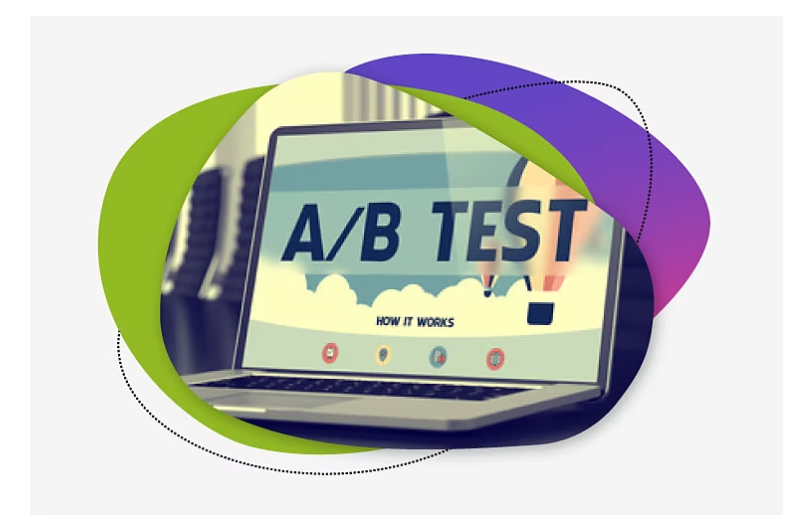
A/B Testing and Optimization
A/B testing, also known as split testing, is a valuable technique in SaaS email marketing that allows you to compare and optimize different elements of your email campaigns. By conducting A/B tests, you can gather data-driven insights, identify what resonates best with your audience, and make informed optimizations to improve your email marketing performance. Here’s how to effectively conduct A/B testing and optimize your campaigns:
- Define Your Testing Goals: Clearly define the goals of your A/B test. Are you increasing open rates, click-through rates, conversions, or engagement? A specific goal will help you focus your testing efforts and measure success accurately.
- Choose a Single Variable to Test: Select one variable at a time to test in your emails. This could be the subject line, email copy, call-to-action (CTA), visuals, layout, or other elements. By testing one variable at a time, you can isolate the impact of that specific element on your campaign performance.
- Create Variations: Create two or more versions of your email, each with a different variation of the variable you’re testing. For example, if you’re trying subject lines, create two email versions with varying subject lines while keeping the rest of the content the same.
- Split Your Audience: Randomly divide your audience into equal or representative segments. To get accurate results, it’s essential to ensure that the details are similar in demographics, engagement levels, or other relevant factors. Send each segment a different version of your email.
- Measure and Compare Results: Track the performance metrics of each email variation, such as open rates, click-through rates, conversions, or other key performance indicators (KPIs). Use statistical analysis to determine if the differences in performance are statistically significant.
- Draw Insights: Analyze the results to identify trends and insights. Determine which version of the email performed better for your chosen variable. For example, did one subject line lead to higher open rates, or did a specific CTA drive more conversions? These insights will guide your optimization efforts.
- Optimize and Iterate: Based on the insights gained from your A/B tests, optimize your future email campaigns. Continuously iterate and refine your emails based on the data-driven insights you gather. Implement the winning variation or combine the best-performing elements from different versions.
- Test Incremental Changes: Test another element once you’ve optimized one variable. Repeat the A/B testing process with a new variable to further refine your campaigns. This iterative approach allows you to improve your email marketing strategy continuously.
- Test at Scale: As your subscriber base grows, ensure that your A/B tests are conducted on a sufficient sample size to yield statistically significant results. Testing on smaller segments might not provide reliable insights, so scale your tests accordingly.
- Test Regularly: Email marketing is ongoing, and user preferences and behaviors can change over time. Therefore, make A/B testing a regular practice to stay updated with your audience’s preferences and optimize your campaigns accordingly.
Remember to document your A/B testing process, including the variables tested, results obtained, and optimizations made. This documentation will help you maintain a record of your learnings and serve as a reference for future campaigns. Additionally, ensure that you track and analyze your email metrics consistently to monitor the impact of your optimizations and make data-driven decisions.
Ensuring Deliverability and Compliance
Lorem ipsum dolor sit amet, consectetur adipiscing elit. Ut elit tellus, luctus nec ul
Ensuring email deliverability and compliance is crucial for the success of your email marketing campaigns. Here are some best practices to follow:
- Permission-Based Marketing: Only send emails to recipients with explicit permission to receive them. Implement a double opt-in process where subscribers confirm their subscription, ensuring you have a valid and engaged audience.
- Use a Reputable Email Service Provider (ESP): Choose a reliable and reputable ESP with a good track record for deliverability. ESPs have established relationships with internet service providers (ISPs) and implement best practices to ensure your emails reach the inbox.
- Authenticate Your Emails: Implement email authentication protocols such as Sender Policy Framework (SPF), DomainKeys Identified Mail (DKIM), and Domain-based Message Authentication, Reporting, and Conformance (DMARC). These protocols verify that your emails are legitimately sent from your domain and not from spammers or unauthorized sources.
- Maintain a Clean Email List: Regularly clean your email list by removing inactive or bounced email addresses. High bounce rates and spam complaints negatively impact your deliverability. Use email verification services to identify and remove invalid or fake email addresses.
- Monitor Sender Reputation: ISPs use sender reputation as a criterion to determine email deliverability. Maintain a good sender reputation by following email best practices, minimizing spam complaints, and consistently sending relevant and engaging content to your subscribers.
- Optimize Email Design and Content: Design your emails to be visually appealing, mobile-friendly, and easy to read. Avoid excessive images, large attachments, or formatting that may trigger spam filters. Craft compelling subject lines and avoid misleading or spammy language.
- Provide Clear Unsubscribe Options: Make it easy for subscribers to unsubscribe from your emails. Include a clear and visible unsubscribe link in every email, as anti-spam laws like the CAN-SPAM Act require. Honor unsubscribe requests promptly to maintain compliance and build trust with your audience.
- Monitor and Analyze Deliverability Metrics: Regularly monitor key deliverability metrics, such as bounce rates, open rates, and spam complaint rates. Track deliverability through the reporting features provided by your ESP or use specialized deliverability monitoring tools. Analyze the data to identify any issues and take corrective actions promptly.
- Comply with Anti-Spam Regulations: Familiarize yourself with anti-spam regulations in your target regions, such as the CAN-SPAM Act (United States) or the General Data Protection Regulation (GDPR) (European Union). Ensure your email campaigns comply with these regulations by including required information, respecting subscriber privacy, and obtaining necessary consent.
- Stay Up-to-Date with Email Best Practices: Email deliverability and compliance are dynamic. Stay informed about industry trends, email best practices, and regulation changes. Regularly review and update your email marketing strategies to align with evolving standards.
By implementing these best practices, you can maximize your email deliverability, maintain compliance with regulations, and build stronger relationships with your subscribers. Delivering emails to the inbox and respecting subscriber preferences are essential for the success of your email marketing campaigns.
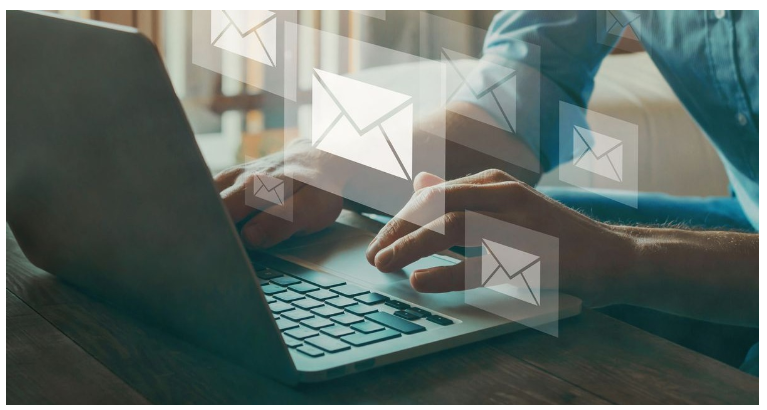
Email Deliverability Best Practices
Email deliverability is crucial for the success of your email marketing campaigns. Here are some best practices to improve email deliverability:
- Build a Quality Email List: Build an engaged and opt-in email list. Avoid purchasing or using third-party lists often containing outdated or invalid email addresses. Instead, grow your list organically through website sign-ups, lead-generation campaigns, and other permission-based methods.
- Implement Double Opt-In: Utilize a double opt-in process where subscribers confirm their email address after signing up. This ensures a right and engaged audience, reducing the chances of spam complaints and bounces.
- Authenticate Your Emails: Implement email authentication protocols such as SPF, DKIM, and DMARC. These protocols verify the authenticity of your emails and help ISPs recognize legitimate senders. Proper authentication increases the chances of your emails reaching the inbox instead of being marked as spam.
- Maintain Sender Reputation: ISPs consider sender reputation a critical factor in email filtering decisions. Take measures to maintain a good sender reputation by following email best practices, sending relevant content, and minimizing spam complaints. Monitor your sender’s reputation using reputation monitoring tools or feedback loops provided by ISPs.
- Use a Reputable Email Service Provider (ESP): Choose a reliable ESP with established relationships with ISPs and implements strong deliverability practices. A reputable ESP will have systems to maximize email deliverability, including monitoring and resolving deliverability issues.
- Optimize Email Content: Craft your email content to be relevant, engaging, and free of spam triggers. Avoid using excessive capitalization, exclamation marks, or misleading subject lines. Keep your content focused and aligned with subscriber expectations to minimize the chances of being marked as spam.
- Maintain a Clean Email List: Regularly clean your email list to remove inactive or bounced email addresses. High bounce rates and spam complaints negatively impact deliverability. Use email verification services or tools provided by your ESP to identify and remove invalid or risky email addresses.
- Monitor Deliverability Metrics: Monitor important deliverability metrics such as bounce, open, and spam complaint rates. Analyze the data to identify trends and issues that may impact your deliverability. Use your ESP’s reporting features or specialized deliverability monitoring tools to gain insights into your email performance.
- Respect Subscriber Preferences: Honor unsubscribe requests promptly and ensure that the process is easy for subscribers. As anti-spam regulations require, include a clear and visible unsubscribe link in every email. Respect subscriber preferences for email frequency and content to maintain engagement and reduce the chances of being marked as spam.
- Stay Compliant with Anti-Spam Regulations: Familiarize yourself with anti-spam laws and regulations in your target regions. Ensure that your email campaigns comply with these regulations, including requirements for identifying the sender, providing valid contact information, and honoring opt-out requests.
Implementing these email deliverability best practices will help increase the chances of your emails reaching the intended recipients’ inboxes, improve engagement rates, and ultimately drive better results from your email marketing efforts.

